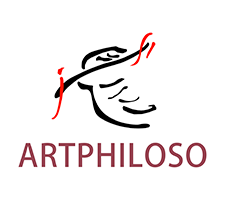


Lifting the Net weaves a unique daily poetry of the fishing port with the agility and haziness inherent in watercolor. The creator uses the color logic of Impressionism, integrating ships, fishermen, and fishing nets into a field intertwined with light and shadow. The rich blue hulls, like silent narrators, carry the memories of the ocean; the transparent texture of the fishing net is blended using the wet - on - wet technique, outlining the rhythm of labor between reality and illusion; the fisherman, dressed in blue, forms a color echo with the environment and highlights the subject with a simple form. In the painting, the whirlpools of water waves, the tilt of the hulls, and the tension of the fishing nets together construct a dynamic balance — the action of “lifting the net” is not captured concretely, yet in the flow of colors and the echo of forms, it conveys the rhythm of labor and the breath of the ocean. Here, art breaks free from the constraints of realism. In the form of visual symbols, it elevates the daily life of the fishing port into a poetic gaze on human - nature and labor - survival. It allows viewers to touch the depth of marine civilization and the resilience of life in the mistiness of watercolor, experience art’s deep empowerment of ordinary scenes, and decode the true meaning of labor in the collision of colors.
When we assume that “lifting the net” is a conventional footnote to the labor in the fishing port, Lifting the Net insists on planting a “rebellious seed” in the colors. Those blue hulls spilling beyond the outlines are not creative mistakes, but a provocation to “regular narration” — the ocean should be an emotionally overflowing entity, so why frame the ships with straight lines? The deliberately blurred boundaries of the transparent fishing net seem to mock the obsession with “precise capture”. The faintly visible fish in the net are more like a “hide - and - seek” game with viewers: you think you can see the harvest clearly, but in fact, you are dragged by the color vortex into reflecting on the “essence of fishing”. The simplified form of the fisherman is simply an “de - personalization” experiment, stripping “humans” from the symbols of labor and forcing us to face: Is it the fisherman who lifts the net, or a ritual of “taking and giving” completed by the ocean through human hands? The creator uses the loss of control in colors and the ambiguity in forms to tear open the warm filter of “fishing port labor”, turning “lifting the net” from a daily scene into a needle that pierces the cognitive cocoon. In the chaos of watercolor, we stumble upon the mystery of the ocean, the absurdity of labor, and art’s ruthless rebellion against “conventional interpretations”. Eventually, in this color “prank”, we re - examine the complex game between human and nature, survival and the unknown.
